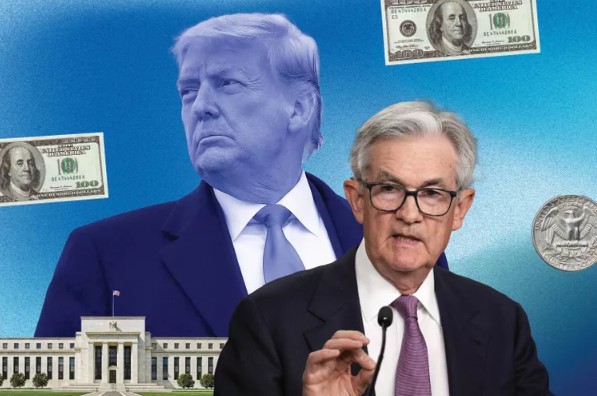In our Outlook 2024 newsletter published in January, we predicted a high range of 5,400 to 5,700 for the S&P 500 over the coming year or two. While satisfied that we correctly saw the uptrend, we are surprised by the accelerated pace at which our optimistic thresh-old has been reached. Indeed, the S&P 500 closed the first half at 5,460, an impressive six-month advance of 14.48%. Indicative of continued lopsided leadership by mega-cap technology, the NASDAQ composite delivered an even more remarkable 18.13% return. Meanwhile the Dow Jones Industrial Average and Russell 2000 indices languished with returns of 3.79% and 1.73% respectively.
That large-cap technology momentum is driving today’s buoyant stock market is an understatement. Last year, the Magnificent Seven (Alphabet, Amazon, Apple, Meta, Microsoft, Nvidia and Tesla) ac-counted for 63.2% of the total 26.3% gain for the S&P 500. In the first six months of 2024, Nvidia alone accounts for one-third of the advance. With an amazing 149% climb that catapulted its market cap north of $3T for the first time and a 10-for-1 stock split to boot, Nvidia has proven to be the dominant force behind the market’s momentum. To further illustrate the point, in a market where the S&P 500 is up 14.48% year-to-date, Nvidia is up 149% while the average S&P 500 constituent is up only 4%. This is the largest underperformance of the average stock relative to the overall market since 1990.
Our investment discipline is such that it is common for us to miss such ascendant trajectories of otherwise solid businesses in their early go-go growth phase. We have never professed to be skilled at momentum investing and instead buy high-quality growth companies when the valuation metrics imply a margin of safety. We did not buy Microsoft, Apple, Alphabet or Amazon when the companies were in their early growth phases and trading with lofty expectations. In-stead, we initiated positions in these wonderful growth companies when they sold at more reasonable multiples. We first acquired Microsoft in 2012 when the PC era was deemed dead, and the stock had not made a new high for 15 years. We initiated our position in Apple in 2013, shortly after the company experienced its first earnings lull in a decade and the company initiated its first dividend. We first purchased Alphabet during a 20% correction back in 2019. We reestablished our core position in Amazon 21% below its recent all-time high, after it had undergone a painful 55% price correction. We avoid the temptation to chase stock prices higher and always prefer buying best-of-breed businesses on the dip. All these examples proved to be wonderful opportunities.
Momentum investing is beyond the scope of our discipline in that it re-quires: 1) faith that there will al-ways be a buyer willing to pay an ever higher price (buy high, sell higher); 2) a trader’s mentality and quick trigger should bad news sur-face; 3) confidence in forecasted earnings that may not pan out; and 4) a willingness to suspend long established valuation metrics. Famous examples of momentum trades gone awry include the dot.com bust of the early 2000s, Cathie Wood’s ARK Innovation ETF and Bitcoin.
In looking specifically at Nvidia, while we are impressed with their AI leadership credentials and stunning earnings growth, there are many potential pitfalls that give us pause. Nvidia shares now trade at 40x forward earnings compared to the overall market at 20x and aver-age S&P 500 stock at 15x forward earnings. While Nvidia’s premium multiple is well-deserved, its quarter-over-quarter earnings growth has slowed from 88% to 34% to 22% to 18% over the last four quarters. Analyst consensus estimates call for a further slowdown in the current quarter. The law of large number is taking hold.
Many other companies envious of Nvidia’s fat margins (including AMD, Intel and Qualcomm) are aggressively deploying their own products at lower prices to under-cut Nvidia and better compete. In addition, hyperscale powerhouses Alphabet, Amazon, Meta and Microsoft are all producing their own AI chips. Even Apple is working with Taiwan Semiconductor to develop proprietary chips to run AI data centers. In the trajectory of all businesses, a point is reached when margins cannot be maintained, and growth inevitably slows. Especially since the AI industry is relatively new and rapidly evolving, we do not have a strong opinion as to when that time may come for Nvidia.
When Nvidia’s market cap recently surpassed $3T, less than four months after it surpassed $2T, it briefly became the largest U.S. company by market cap. It was the first time since 2019 that any company other than Microsoft or Apple had claimed that throne. Since 1926, there have only been eleven other companies to have earned the honor of being the largest U.S. company by market capitalization: AT&T, Apple, Cisco, DuPont, Exxon Mobil, General Electric, General Motors, IBM, Microsoft, Philip Morris and Walmart. Of these companies, only Apple, Exxon, Microsoft and Walmart are even in the top twenty today. All others experienced spectacular falls from grace.
From a technical perspective, Nvidia is in unchartered territory. The shares recently traded 100% above their 200-day moving average. Since 1990, the widest spread for any U.S. company then reigning as the largest company by market cap was Cisco Systems back in March of 2000, when it sold 80% above its 200-day moving average. Another interesting similarity, Nvidia is up 4,280% in five years to its peak compared to 4,460% for Cisco in the five years leading to its peak. We have never seen a parabolic stock chart that ultimately does not undergo significant reversion to the mean, thus paving the way for opportunity.
Nvidia may do very well in the future and the stock may prove to be a wonderful performer from current levels. One analyst speculates that Nvidia will one day claim a $10T market cap. Another analyst, Dan Ives of Wedbush Securities, has become famous for his bullish technology calls and suggests we are at “9pm in an AI party that lasts until 4am”. Ives has a $200 price target on Nvidia. Caveat emptor.
Perhaps unfairly, we are picking on Nvidia as emblematic of what’s wrong with this highly concentrated market: lack of breadth. Using Relative Strength Index (RSI) to measure momentum, the market-cap-weighted S&P 500 recently traded with an RSI above 70, while the equally weighted S&P 500 traded with an RSI below 50. RSI is measured on a scale of 0 to 100 and readings above 70 imply overbought conditions. With data going back to 1990, this is the first time in history there has been such a wide performance dispersion between market-cap and equally weighted S&P 500.
In previous episodes where markets were similarly concentrated, investors were rewarded for staying the course with an appropriately diversified portfolio. Buying momentum and chasing performance has never been our forte and we remain confident that your portfolio is well-positioned for worthwhile risk-adjusted returns. The longer this dispersion persists, the more optimistic we become for a sustained period of superior performance.
Meanwhile, the core PCE price index came in at 2.6% in May and is glacially moving towards the Fed’s 2% target. Softening retail sales are indicative of a weakening consumer, even as the labor market remains steady. ISM Manufacturing has contracted for three consecutive months while ISM Services remain in expansion mode. Industrial production rose by 0.9% in May, its biggest gain since last July. These mixed economic signals do nothing to alter our view that the next move by the Federal Reserve is a cut, perhaps as early as September of this year.
Especially with post-COVID supply chains now functioning, one could make a strong case that stubborn inflation is the Fed’s own doing. With high interest rates, cost of capital is such that homebuilders are not increasing supply commensurate with the high demand of millennial homebuyers. Homeowners who bought or refinanced when interest rates were pegged to zero are loathe to sell, further exacerbating supply and forcing would-be buyers to rent at persistently high prices. With owner equivalent rents as the largest contributor to today’s above-target inflation, it may take additional economic weakness and subsequent rate cuts to bring the housing market back into equilibrium. Further, with approximately 75% of U.S. wealth in the hands of only 10% of the population, wealthy savers are receiving an estimated $500MM boon on the $6T invested in high-yielding money market funds. Much of this income surplus is undoubtedly driving demand and prices for services.
When the Fed does finally cut interest rates, we expect much of the wide dispersion in stock valuations to close markedly and the equally weighted portfolio to finally have its day. A Fed rate cut will reinvigorate the economy, remove the recession-fear overhang that dogs many cyclicals, increase the allure of more interest-rate-sensitive stocks, and lessen the relative appeal of those Magnificent 7 stalwarts whose premium multiple is predicated on their perceived im-munity to the economic cycle. While it may require some patience, our discipline requires that we stay the course with a broadly diversified portfolio of high-quality businesses with proven records of earnings growth, predictable cash flow, and consistent dividend increases. Our approach may be boring, but long-term investors are sure to be rewarded. As Warren Buffet famously quipped: “Beware the investment activity that produces applause; the great moves are usually greeted by yawns.”
The opinions expressed herein are the sole views of Vantage Wealth. Supporting data and factual information used throughout is deemed to have been obtained from reliable sources.




